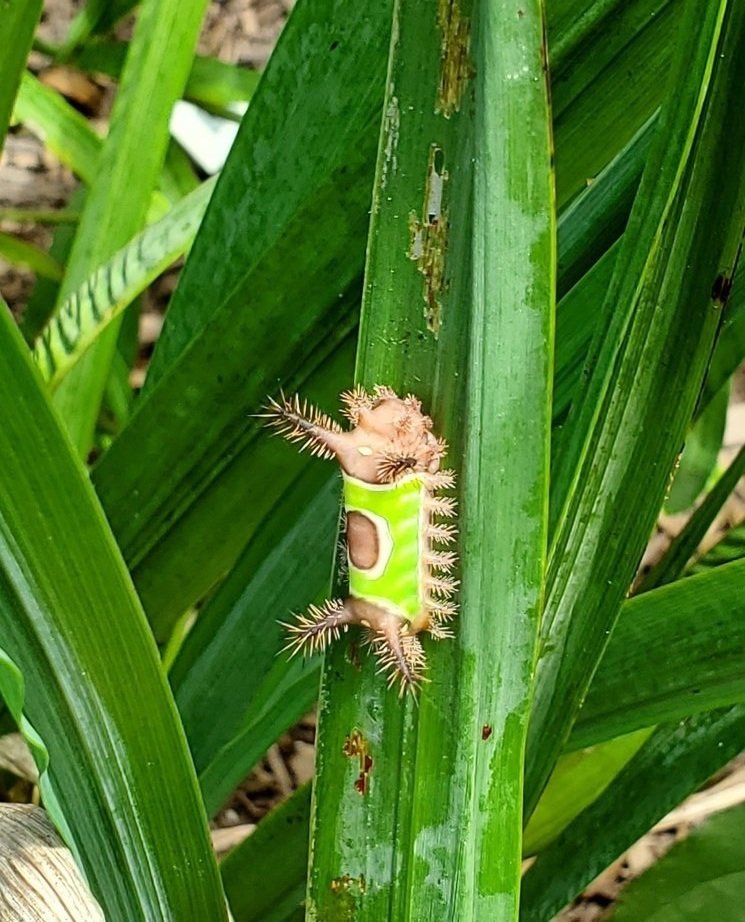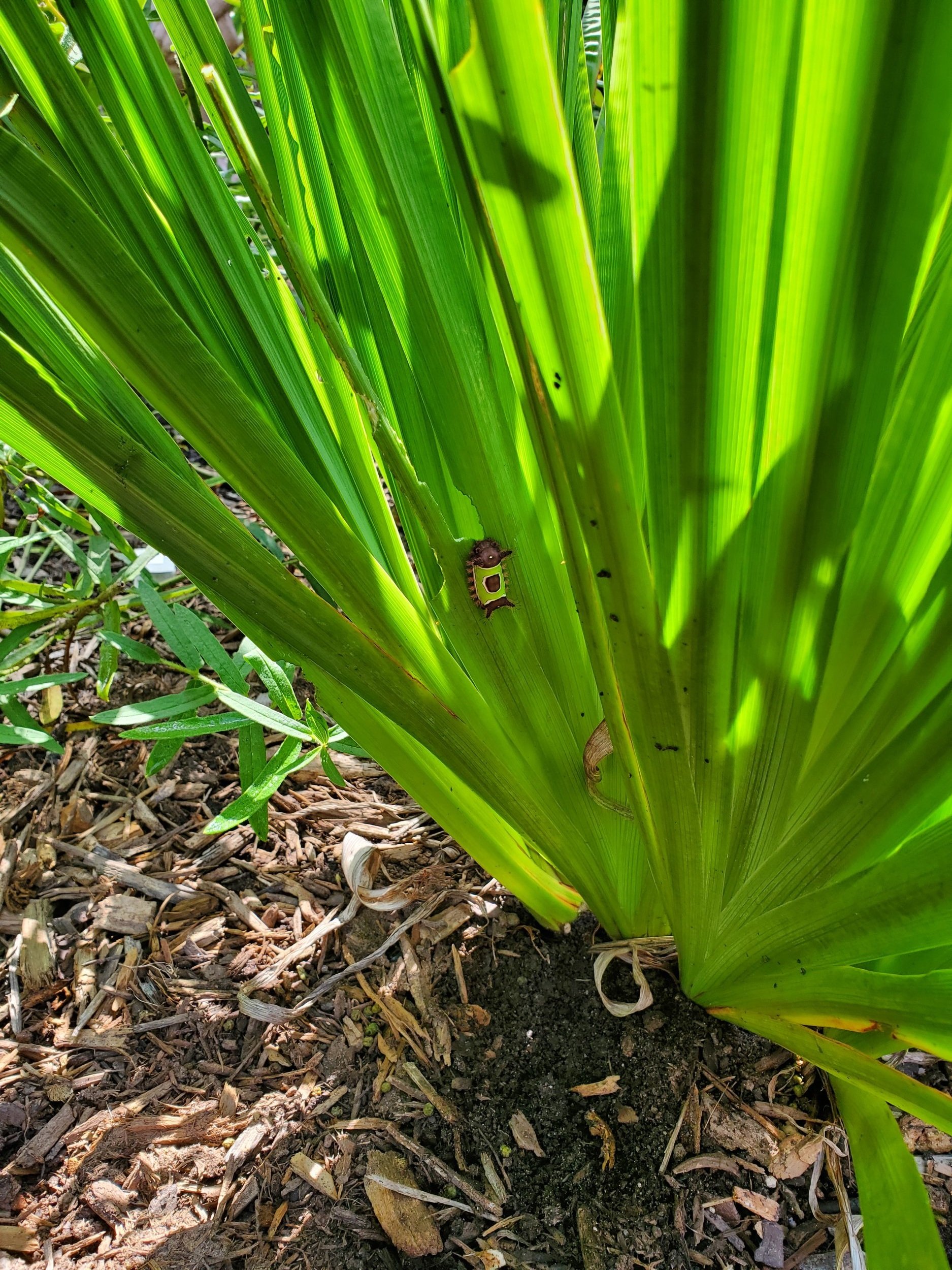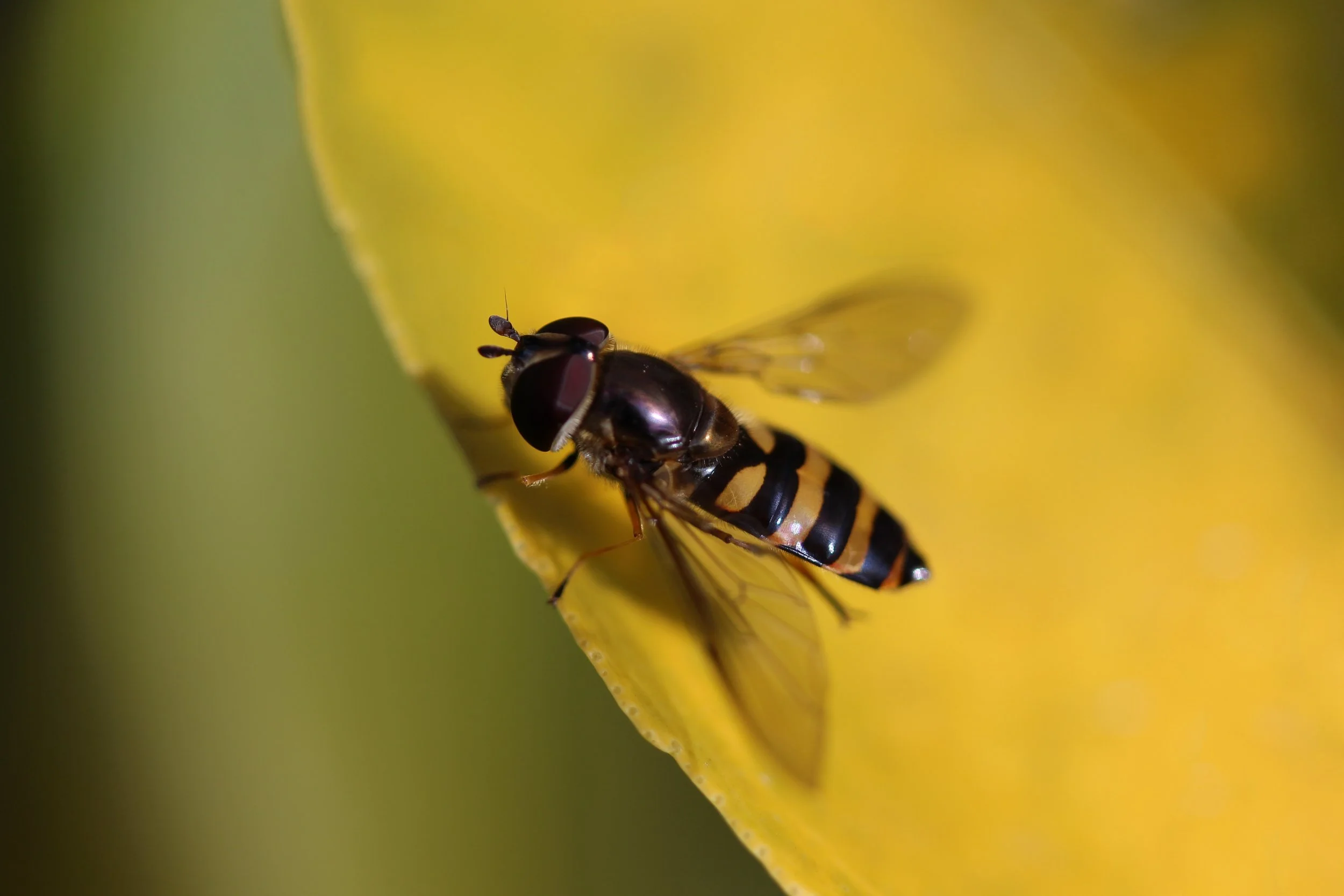I have never been afraid of insects (except for cockroaches, and “Palmetto Bugs” gross me out) until I had an unpleasant encounter while weeding last week. I was pulling small weeds around some shrubs and perennials, when a sudden, searing pain shot through my wrist. I drew back, expecting to see my attacker. Nothing obvious. I used the handle of my loppers to part the Iris foliage near the scene of the crime, and spotted a sporty-looking caterpillar – lime green with a tan and white splotch in the middle. It did not take much research to learn that I had encountered a saddleback caterpillar. Every website advised “avoid contact.”
Saddlebacks are adorned with poison-filled spines. I normally have a limited reaction to bites and stings but within two minutes, my fingers had swelled so much that I could not remove my wedding ring. By the time I reached the house, my entire forearm had doubled in size and was an angry red. Thanks to Google, I knew the treatment to follow, which I will share with you. I washed with soap and water, then used a piece of duck tape to pull out the spines. Next step was to ice the area and swallow a couple of Benadryl.
A closeup view of the poison-filled saddleback spines.
It is easy to overlook a Saddleback. They are only an inch long.
After the pain and swelling subsided (two hours), I went on a reconnaissance mission, intent on sending my attacker to caterpillar heaven. I spotted it, reached in with my clippers, and immediately brushed another one with the other arm. Repeated steps in paragraph two. Another two hours later, I donned heavy leather rose-handler gloves that extend up to my elbows, and revisited the doomed creatures. A careful examination revealed eleven of these evil beings on one Iris ensata. After recycling them, I checked all surrounding plants and found no more.
Saddleback caterpillars, Acharia stimulea, are native and found across the southeast. The caterpillars dine on a wide variety of plant materials, but are usually found in such small numbers that their damage is insignificant. The caterpillar spins itself a silken cocoon for winter before emerging in spring as a fuzzy brown moth with white spots. The mature moth has no trace of the lime green coloration which makes the caterpillar so distinctive. The moths are harmless to people.
Thus chastened by Mother Nature, I took a wide berth to the bees that chose to collect inside my new screen porch. The doors have not been installed yet, and these large black and yellow winged visitors could find their way inside the screen enclosure but could not find their way outside. They are scary-looking. I was surprised to learn that these were not some variety of Killer Hornets but instead harmless (non-stinging, non-biting) Hoverflies (family Syrphidae). The construction workers onsite told me that a common name is Broadcast Bee because they buzz loudly, “broadcasting their presence,” while they hover around humans’ heads as if to say, “Hey, look at me!”
There are thousands of Hoverfly species, of various sizes. Hoverflies have short, stubby antenna and a large set of wings for flying. The second set of wings is tiny, and are used for balance rather than propulsion. If you watch them carefully, you will see that hoverflies really do hang in the air with no apparent destination, while bees and wasps have an obvious direction to their flights. Hoverfly larvae look like the typical fly maggot, but their favorite meal is APHIDS! They are good pollinators, too. It is uncanny how much they look like something that would cause harm. You can encourage Hoverflies by planting nectar-rich, small flowers like Alyssum.



